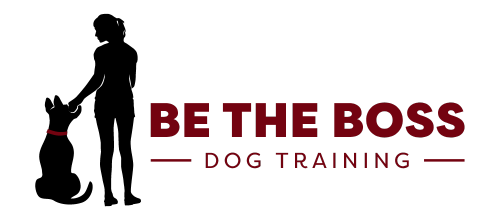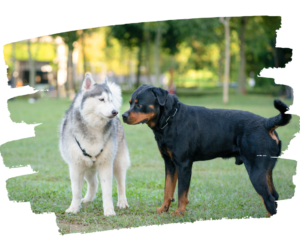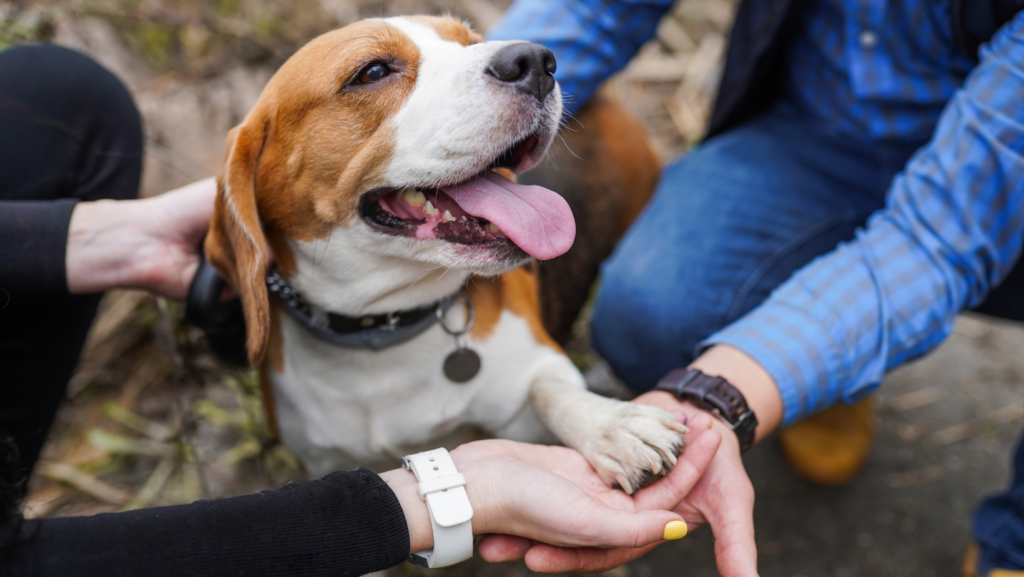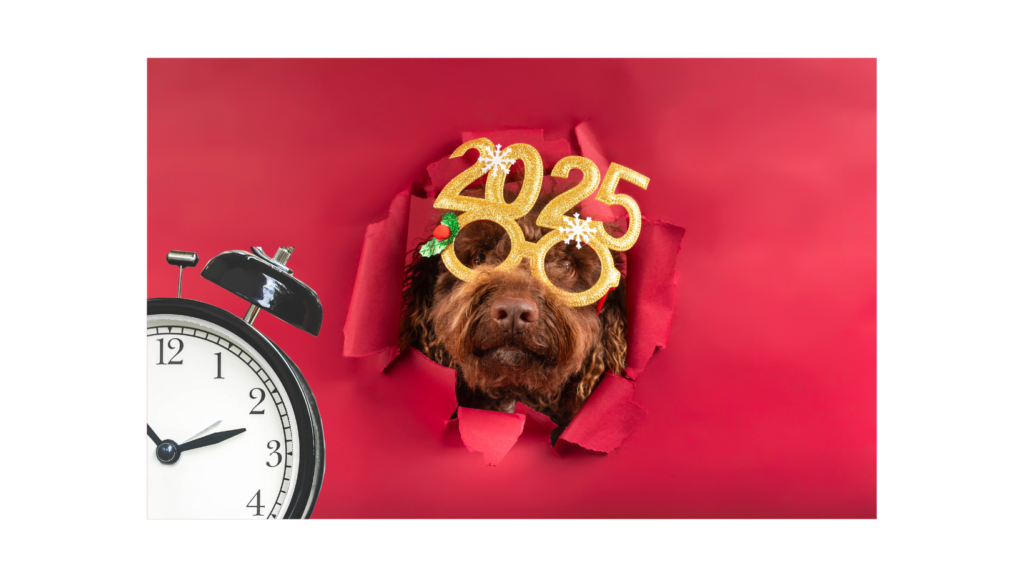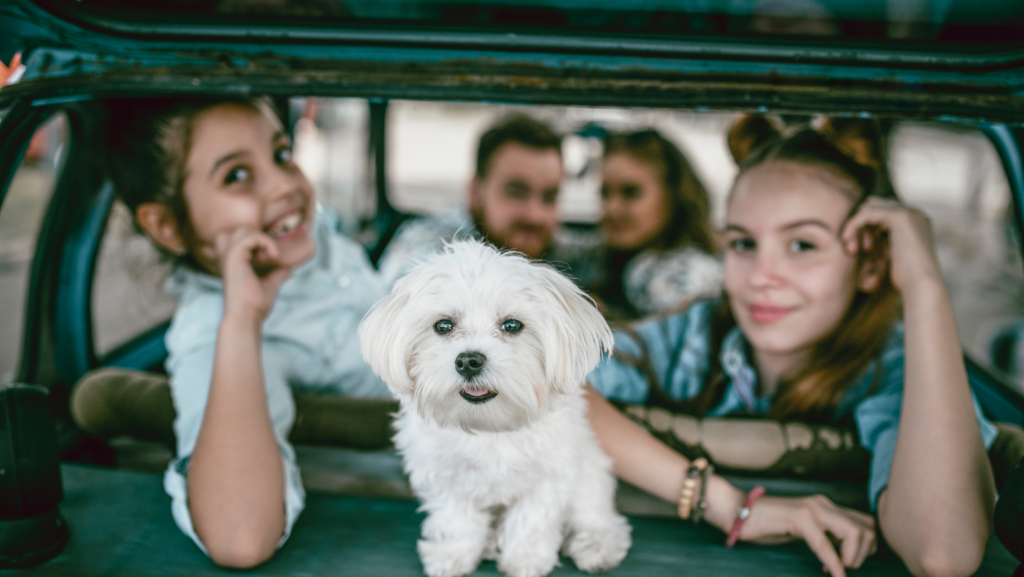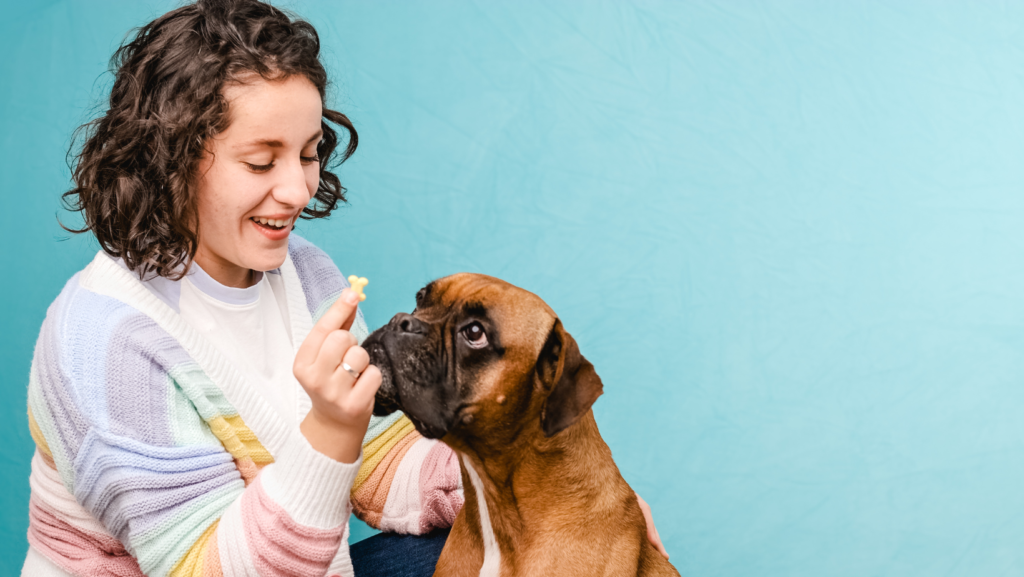Hey there, fellow dog lovers! It’s Bethany, your go-to gal for all things canine. As a passionate almost 40yo dog trainer, I’ve had the pleasure of observing hundreds, if not thousands, of doggy meet-and-greets. Let me let you in on a little secret: those initial seconds when our furry friends meet are crucially important. Surprisingly, many of us humans either totally miss these fleeting moments or — gasp! — misinterpret them. Whether our four-legged companions end up with a new playmate or a potential skirmish can hinge on those very first moments of contact. Dive in with me as we unravel the mysteries and nuances of that all-important first ‘hello’ between our pups! 🐾✨
The 4 Rules When Greeting Another Dog

- Trust Your Instincts:
The moment you spot another dog approaching, your internal alarm system might give you a little ping. Listen to it! More often than not, our intuition picks up on energy and body language cues before our conscious mind even registers them. - Sense the Energy:
Remember, it’s not just about what you see but how you feel. A dog that’s overly excited, wagging its tail frenetically, barking incessantly, or pulling hard on its leash might be emanating waves of anxiety, excitement, or aggression. On the flip side, a calm, relaxed posture, with a gently wagging tail, indicates a more composed and friendly pooch. - The Owner’s Role – An Unspoken Clue:
You know how we often say dogs and their owners have similar vibes? It’s SO true. An owner who’s visibly relaxed, has a firm but gentle hold on the leash, and communicates calmly with their dog, is one who likely has their pet under good verbal control. Contrastingly, if the owner appears anxious, is constantly tugging on the leash, or is raising their voice, it might be a hint to proceed with caution. - Politely Setting Boundaries:
Ah, the tricky part. Sometimes, other dog owners, brimming with enthusiasm (or sometimes just cluelessness), might rush over, asking if their fur-baby can meet yours. Here’s a neat little trick I use: with a warm smile, I simply say, “Sure, as long as your dog is under verbal control, they can meet.” This often makes them pause and evaluate their dog’s current state. And you know what? Most times, they appreciate the gentle reminder.
By doing this, you’re not only ensuring your dog’s safety but also helping to foster positive interactions in the wider doggy community. Because at the end of the day, we all want our fur-friends to have fun, safe, and memorable interactions that leave tails wagging and hearts happy.
How Do I Get My Dog to Meet Other Dogs?
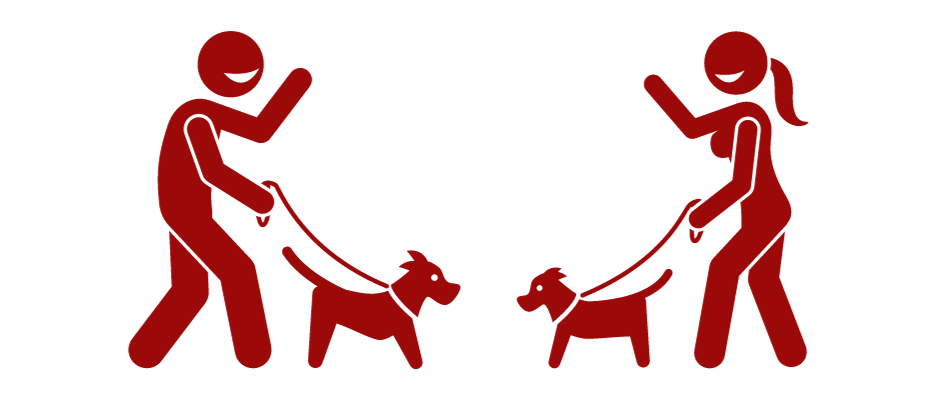
Navigating the world of doggy introductions can sometimes feel like decoding a secret language. But hey, that’s what I’m here for! Dive into our second topic together: Getting your dog to greet other four-legged pals like a pro.
- Building that Trust Foundation:
First things first: Does your doggo sit when you say “sit”? Do they come to you when called? If the basics aren’t in place, that’s totally okay! But meeting unfamiliar and ‘new’ dogs might need to wait a tad longer. Before stepping into the social dog world, it’s essential that your pup views you as their guide. Without this trust, approaching an unknown canine comrade can be risky. And trust me, signing up for some dog training can be both a fun and transformative journey for you and your fur-baby! - Body Language – The Doggy Decoder:
Okay, picture this: You see a dog, tail wagging, and think, “Aww, what a happy pup!” But wait a minute. A wagging tail is just one piece of the puzzle. It can convey happiness, sure, but sometimes it’s a sign of agitation or even aggression. The key is looking at the bigger picture. What else is your dog showing? Are they chill with a soft gaze, or are their ears pinned back and body stiff? Reading body language is like piecing together a story; every sign adds a new layer of meaning. - The Respectful Approach:
You know those awkward human moments when someone invades your personal space, and you’re like, “Whoa, back up a bit!”? Dogs have those feelings too! It’s super important for your dog to respect another dog’s space. A polite sniff from a distance before moving closer is akin to a friendly wave in the human world. - Come Out to Our FREE Packwalk Every Saturday:
Every Saturday, bright and early at 9am, our community gathers for an exciting packwalk. Not only is it a fabulous way to get a dose of fresh air and exercise, but it also offers an incredible opportunity for your dog to socialize. Yes, you heard that right! Your pupper can meet and interact with a bunch of new tail-wagging friends and their humans in a controlled and positive environment. Want to know more or find all the details for our next gathering? Dive into our community page on Facebook: facebook.com/groups/dogsunleashedutahcounty. All the information you need is just a click away!
Remember, every doggy meeting is a chance for learning and building positive experiences. And while the journey might have its bumps, with trust, observation, and a sprinkle of patience, you’ll have your dog mingling like a social butterfly in no time!
Step-by-Step Instructions When Allowing Your Dog to Greet Another Dog
- Observation First: Before letting dogs greet each other, observe their body language from a distance. Relaxed, wagging tails, and calm postures are good signs. Raised hackles, growling, or stiff postures are warning signs.
- Choose a Neutral Location: Avoid letting dogs greet each other for the first time in a place that one dog considers its territory, like its home or yard.
- Keep Leashes Loose: If both dogs are leashed, ensure that the leashes are kept loose to prevent tension. Tension on the leash can cause anxiety and reactivity.
- Side-by-Side Walking: Start by having both dogs walk parallel to each other with some distance apart. This allows them to get a sense of each other without the direct confrontation of a nose-to-nose greeting.
- Allow Sniffing: If both dogs seem relaxed after the parallel walk, you can let them approach each other gradually. Dogs typically sniff each other’s noses briefly and then might move to sniff each other’s rears. This is normal dog greeting behavior.
- Keep Initial Greeting Short: After a few seconds of sniffing, if everything seems calm, you can praise both dogs and then guide them away from each other. This ensures the greeting doesn’t get prolonged, which could escalate to heightened emotions.
- Monitor Body Language: Watch for signs of tension: stiffened body, curled lips, deep growls, prolonged staring, or raised hackles. If any of these signs appear, calmly and promptly separate the dogs without creating panic.
- End on a Positive Note: After the greeting, give each dog a treat and praise them for their good behavior.
How Owners Can Help:
- Stay Calm: Dogs pick up on their owner’s emotions. If you’re nervous, your dog might become nervous too. Try to remain calm and confident.
- Distractions: If you anticipate problems or if one dog is particularly focused on the other, use treats or toys as distractions.
- Short Leash, but Not Tight: Hold the leash short so you have control, but ensure it’s loose so as not to create tension.
- Avoid Face-to-Face Introductions: Dogs can perceive this as threatening. Instead, aim for them to approach each other in a curve or from the side.
- Practice Recall: Having a strong recall command (“Come”) can be invaluable in situations where you need to get your dog’s attention quickly.
- Know When to Step In: If you see signs of aggression or fear, it’s essential to intervene quickly but calmly to prevent a potential conflict.
- Socialization: Regularly exposing your dog to other dogs in controlled environments like puppy classes or playgroups can help them become more comfortable with greetings.
What a ride, fellow dog aficionados! 🌟🐕
As we’ve trotted through the intricacies of doggy greetings, it’s evident that each furry interaction is a delicate dance of trust, understanding, and intuition. This journey, just like training and bonding with our pups, is ongoing. And while every dog has its own rhythm and rhyme, our role as their beloved humans is to guide, protect, and cherish them in all encounters.
Remember, diving deep into the world of canine communication is not just about ensuring peaceful doggy interactions, but also about fostering stronger bonds with our fur-friends. And this is a journey that we don’t have to undertake alone. Resources like bethebossdogtraining.com are phenomenal when it comes to enhancing our skills as responsible pet parents.
For those looking to further connect, share stories, and seek advice from fellow dog lovers in our community, do check out this lovely group: facebook.com/groups/dogsunleashedutahcounty. It’s a place where passion meets knowledge, making the world a better place for our four-legged companions.
Here’s to many heartwarming doggy meet-and-greets ahead! And always remember: in the world of dogs, love, patience, and a treat or two, go a long way.
Keep wagging and exploring! 🐾💖
